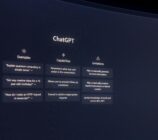Words – Belinda
Anyone in charge of social media management for clients knows the pain of getting locked out of accounts or scrambling to access the page. It doesn’t help when global outages take out the big platforms, locking out account managers and disrupting paid campaigns.
A 2023 survey found that 59% of internet users had issues with social media platforms at least monthly, so if it happens to you, you’re not alone.
While some social media platform issues are beyond your control, there are some things you can do to help make the process as stress-free as possible. Here’s how.
How to avoid (some) social media issues
Prevention is better than cure and now is a good time to take steps to make any tech issues as minor as possible.
If you don’t already have two-factor authentication (2FA) set up, do it today. 2FA can include apps, SMS or email codes, face or fingerprint recognition, PINs, or security questions.
Here’s how to set up 2FA on social media accounts:
1. Access account settings
- Look for Security/Privacy settings
- Search for two-factor authentication
2. Enable 2FA
- Choose verification method (typically):
- Authenticator app
- SMS/text message
- Security key
3. Set up recovery options
- Save backup codes
- Add backup email/phone
- Store recovery keys safely
- Test
- Log out and log back in to check if it works.
Regardless of the platform, keep a secure record of backup codes and use a password manager to maintain unique, strong passwords. Have a document of account ownership and maintain updated team access lists – especially when people leave the agency or no longer have responsibility for account management. Ensuring multiple admin access avoids single points of failure.
When you have login and access issues
We’ve all been there—you can’t log in or access your account. You haven’t changed the password, and there’s no discernible reason why you can’t get into your account.
Sometimes, device-specific issues can prevent login, so try logging in from your laptop rather than mobile, or use a different browser.
Whether its Facebook, Instagram, LinkedIn, or TikTok, first check if the platform is experiencing outages by visiting DownDetector or the official pages of the social media companies.
If no outages are reported, your account may have been temporarily restricted to suspicious activity and you may need to verify your identity through two-factor authentication.
If you’re certain you’re using the correct credentials but can’t log in head to ‘forgot password’ on the login page, and reset your password.
If you still can’t get access, your account may have been suspended or disabled due to policy violations – either real or perceived by the platform. To see if you’ve been suspended:
- Check your inbox for any emails from the platform regarding account status
- Visit the platform’s help centre to learn about account recovery options.
What to do when you have scheduling failures
If your scheduled content isn’t posting, try clearing your browser’s cache and cookies – this often fixes the problem. Google recently found that clearing cache and cookies fixed 35% of browser-related issues. After you’ve done this restart your browser and try again.
It’s not always possible but using native scheduling tools where possible can help reduce scheduling issues. Direct integration with the platform means fewer chances of things going awry, and real-time notifications alert you if there is a problem.
Still having issues scheduling posts? Check the time zone settings – more than 40% of social media professionals have experienced scheduling errors due to time zone differences. Check the time zone settings in your management platforms and ensure all team members are working with the same time zone.
Don’t wait until problems arise
Regularly auditing your social media account access and permissions helps ensure that only authorised personnel have the rights to manage accounts. This helps prevent unauthorised changes and maintains the security of your digital assets.
As we previously mentioned, having documented backup procedures in place can help. These procedures should outline step-by-step processes for preserving your content and account settings, allowing for quick recovery in case of account issues.
Create a template to alert clients of potential issues on platforms. As part of emergency comms planning, you should also have an easily accessible document that has the full name, email address and phone number of key client contacts so you can alert them to any issues as soon as they occur.
Also keep an easily accessible emergency contact list for support including phone numbers and emails to support teams for each platform you use.
Regular team training on platform changes keeps everyone up-to-date with best practices and updated functionalities.
Platform issues are inevitable, but proper preparation can minimise their impact. Keep your troubleshooting guide updated and share knowledge across your team to maintain smooth operations.
Don’t want the hassle of social media management? Speak to us! We’re a full-service digital agency with experts in all aspects of social media.




